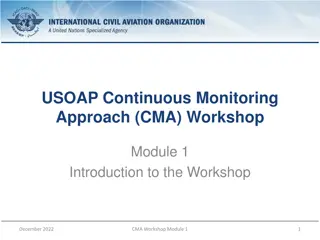Mastering Effective Collaboration Workshop Insights
Explore the nuances of collaboration vs. cooperation, understand key concepts of group work, and learn the essential elements for successful collaboration through shared objectives, values, and accountability. Discover the value of diversity in collaboration and the challenges faced in team exercises like the Survivor Challenge. Embrace active commitment, shared information, and opportunities for growth in collaborative endeavors.
Download Presentation

Please find below an Image/Link to download the presentation.
The content on the website is provided AS IS for your information and personal use only. It may not be sold, licensed, or shared on other websites without obtaining consent from the author.If you encounter any issues during the download, it is possible that the publisher has removed the file from their server.
You are allowed to download the files provided on this website for personal or commercial use, subject to the condition that they are used lawfully. All files are the property of their respective owners.
The content on the website is provided AS IS for your information and personal use only. It may not be sold, licensed, or shared on other websites without obtaining consent from the author.
E N D
Presentation Transcript
EFFECTIVE COLLABORATION Karla Desch nes
Workshop Goals Understanding key concepts about group work Recognizing the difference between collaboration and cooperation Explore the challenges of collaborating
Key Concepts The social change model defines collaboration as, working together toward common goals by sharing responsibility, authority, and accountability in achieving these goals. Collaboration Working together to help each person/group achieve their own personal/group goals. Cooperation An approach to working toward common goals with the assumption that resources are limited and each party must take some losses for the benefit of the group. Compromise
The Value of Diversity in Collaboration Diversity is an essential part of collaboration and multiples group effectiveness by capitalizing on multiple talents and perspectives to generate creative solutions and actions.
Collaboration VS. Cooperation CO-LABOR CO-OPERATE When cooperating, people perform together (co-operate) while working on selfish yet common goals. When collaborating, people work together (co-labor) on a single shared goal. Active Commitment- meaningful collaboration requires more than just exchanging data Sharing culture of informing ensuring colleagues are in the know . Communication is seen to be the basis of cooperation. Collaborators plan, decide and act jointly; they also think together - combining individual schemes to create original frameworks. Cooperative groups work face-to- face and learn to work together
The Essential Elements of Collaboration In addition to strong leadership, successful collaboration also requires the following: Shared agreement about problem areas(s) Shared aims, values, principles about change, and improvement strategies Shared results and accountability for those results Shared commitment to monitoring results and making adjustments when barriers and problems are identified Shared information and resources Opportunities for risk-taking, new roles, and continued learning
The Challenge 18 minutes Teams of 5 Survivor Exercise
Scenario: You and your companions have just survived the crash of a small plane. Both the pilot and co-pilot were killed in the crash. It is mid-January , and you are in Northern Canada. The daily temperature is 25 below zero, and the night time temperature is 40 below zero. There is snow on the ground, and the countryside is wooded with several creeks criss-crossing the area. The nearest town is 20 miles away. You are all dressed in city clothes appropriate for a business meeting. Your group of survivors managed to salvage the following items: A ball of steel wool One quart of 100-proof whiskey A loaded .45-caliber pistol Newspapers (one per person) Extra shirt and pants for each survivor Family-size chocolate bars (one per person) 20 x 20 ft. piece of heavy-duty canvas A sectional air map made of plastic Can of Crisco shortening Cigarette lighter (without fluid) A compass A small ax Your task as a group is to list the above 12 items in order of importance for your survival. List the uses for each. You MUST come to agreement as a group.
Stepping Back What happened? What does this have to do with collaboration? What principles of collaboration can you identify after participating in this activity? What can you take from this and apply in your future collaborative efforts (events, initiatives, programs, etc.)?
Rankings of Survivor Items The ranking of the survivors items was made by Mark Wanvig, a former instructor in survival training for the Reconnaissance School of the 101st Division of the U.S. Army Email me if you want the rankings and explanations karla.deschenes@ubc.ca
Collaborative Leadership Getting Results Is democratized leadership and decision- making structures Look broadly for ideas and opportunities Involve a diverse group of people Model collaboration Be strong and decisive
A Final Thought How do you want to be supported by your team and your Peer Programs advisor to achieve your goals?























